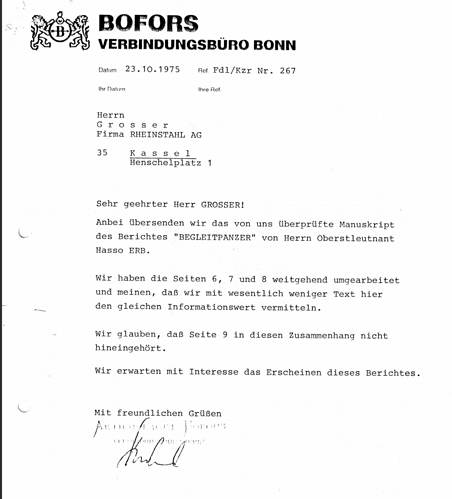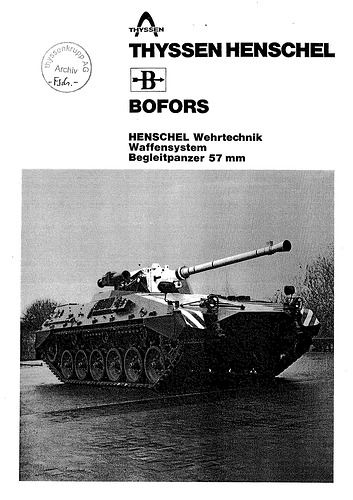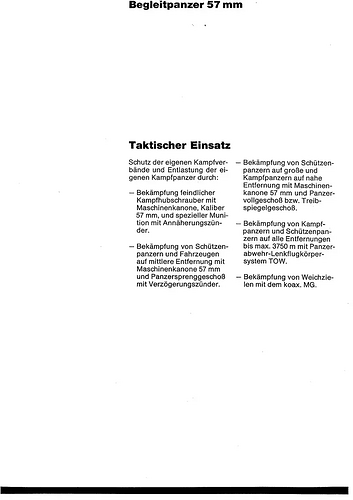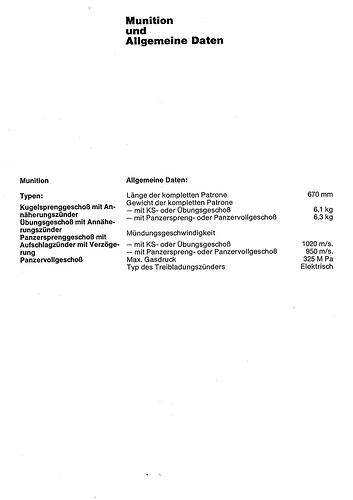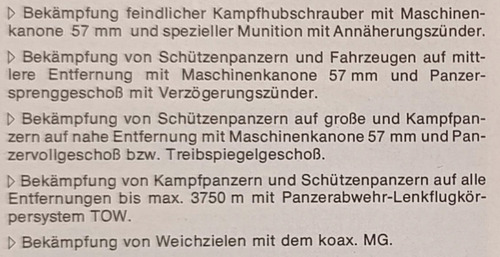Sigh.
The gun used by the begeleight is the bofors 57mm which is a gun used by many navies around the world.
Hence the performance characteristics of a new round would be classified DUH
There are far better suited rounds to be used on naval vessels than a 57mm APFSDS
Who am i to say that no one wants APFSDS?
maybe it was a telescopic apfsds or idfk.
He said no sources that are public.
Period.
He didnt say sources.
The fact that he had to out public in there means something whether you like it or not.
It’s already OP, so, if you want A 2.0 BR bump, be my guest.
It would be great to move the begleitpanzer 57 up, it is a nightmare to face if the person driving has at least two braincells working.
First hand NATO sources aren’t always considered reliable. So i’d still bet on Wiki
100% agree, move it to Rank 7 give the IRST and APFSDS and make it 10.3 atleast.
I’d also move the Radkampfwagen to Rank 6, idk why it’s at Rank 7
submit this as sources for bug report
You still dont seem to understand what is needed for reports and to change vehicles.
This is not enough for a suggestion
I wish i could but i don’t have the source of this graph
I have a larger document but it doesn’t say what it is from
oh then we can’t do anything
I just don’t get it… we know the 57mm bofors gets apfsds and there are documents about it but they are all classified for some reason and I am not foolish enough to post them here. Like why is it classified? No tank project has used it for like 48 years…
The documents about the apfsds are mostly classified, but we dont even have them, sadly.
Otherwise, we could make use of them somehow in a legal way.
I like the ‘somehow in a legal way’ part
fantastic source
Thought I might aswell “revive” this thread with a summary on my findings regarding the Begleit’s ammunition-types - in particular: Armour Piercing-type rounds;
Let’s start with what the two “primary” sources state and what information we can gather from them:
1975 Report
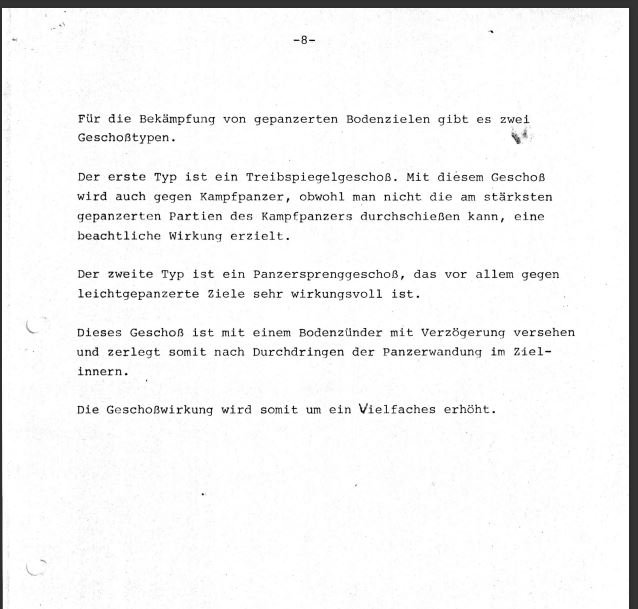
Translation (rough):
There are two shell-types for combating armoured surface targets.
The first type is a discarding sabot round. This round achieves remarkable results, even against battle tanks, even though it can not penetrate through the most armoured places of the battle tank.
The second type is a Armour Piercing High Explosive round, which is especially effective against lightly armoured targets. This round is fitted with a base-fuze with delayed action and thus detonates within the target after clearing the armour-plating.
The effect of the round is thus increased by a multitude.
The date of the document (10/1975) also gives us important information here, as this means the discarding sabot - type round that is refered to here is in fact a APDS round and not APFSDS.
The reason for this is simple - the Bofors 57/70 (to this day) uses a rifled barrel, which don’t work well with fin-stabilized rounds. APDS rounds are far more common for such barrels, as they’re spin-stabilized.
APFSDS for rifled barrels didnt really see any noteworthy use until >1978, when the U.S. “invented” proper slipping-drive bands, which were able to sufficiently reduce the spin of the projectile to minimize the loss in performance compared to smooth-bore barrels.
Since the document that describes the penetration characteristics of the discarding sabot round here significantly predates the introduction of proper slipping drive-bands, aswell as the fact that “Treibspiegelgeschoß” as a term can mean either APDS or APFSDS, with the former being far more common, we can conclude the following:
-
The Begleitpanzer 57 mm - or at the very least the 57/70 Mk 1 was tested with APDS type ammunition before 10/1975.
-
The 1975 report is insufficient as source for the APFSDS claim.
–
1977 Brochure
The “Taktischer Einsatz” (Tactical Use) says the following:
“[…] Combating IFV’s at long and battle tanks at close range with 57 mm automatic cannon and Armour piercing solid shot bzw. discarding sabot shot.”
(bzw. - “beziehungsweise” → Indicates the following word to be a different designation of the preceeding word OR stands for “or […] respectively”)
The problem here is that this paragraph can be intepreted in different ways;
-
“bzw.” is used to add “Treibspiegelgeschoß” as additional defining word for “Panzervollgeschoß” and the latter is used solely to differentiate it from the previously mentioned “Panzersprenggeschoß” to make clear it’s a solid-shot round and doesnt include any filler.
APDS rounds are technically also solid-shot type rounds, thus it’s possible that they’re not refering to two rounds, i.e. APCBC and APDS but only to one - a armour piercing solid shot, specifically a armour piercing discarding sabot round. -
“bzw.” is used to indicate that there are two rounds - APCBC and APDS, which in this case both serve the same purpose, i.e. combating enemy IFV’s at long and MBT’s at close ranges.
In my opinion, the latter seems more likely - however the problem comes with the “ammunition and general data” page, which doesnt include the APDS round whatsoever.
TL;DR / Summary:
Click to expand
The discarding sabot round mentioned in the 1975 brochure is most certainly APDS and not APFSDS, due to the conducted firing tests of that round 1) obviously predating the document and 2) the document pre-dating the introduction of proper slipping drive bands, which are almost a necessity for the use of APFSDS rounds in rifled barrels, such as the Bofors 57 mm SAK L/70 Mk. 1
The brochure only mentions the discarding sabot round in the tactical use section (which in general, appears to be almost identical to what is described in the 1975 report.
No further data on the rounds’ performance or characteristics are given in the “ammunition and general data” page however.
Note that the brochure is incomplete and outdated (e.g. turret-diagrams and blueprints not matching built functional mockup) and thus the pages on e.g. the APDS round are included in those that are possibly still missing.
For example, the datasheet on the HE-PFPX [kulsgr m/70 Z zonar] is missing for certain, however it’s partially available within secondary sources.
Now, let’s take a look at various secondary sources:
Click to expand
IDR Volume 11 - 02/1978
Claims: APFSDS
Other rounds:
AP (full calibre) - Was used? Yes - 57 mm slpprj m/67
AP (w/ 300g hexotonal) - Was used? Yes - Is not AP but SAP, specifically HC - 57 mm smgr m/70 f k sar
HE-PFPX (PFHE w/ proxy fuze) - Was used? Yes - 57 mm PFHE Mk. 2 - 57 mm kulsgr m/70 Z zonar
TP - Was used? Yes - “TPPX” (Target Practice ProXimity) - offered but never serviced by any nation AFAIK.
Jane’s Armour And Artillery (Various Editions from 1979 - 1986)
Claims: APFSDS
Other rounds:
Regular HE - Was used? No (never specified for Begleit)
HE (300g hexotonal) - Was used? Yes - HE is more fitting than AP because the round is basically just HE with a penetrator cap and windshield between that and the PD-Fuze.
AP (Full cal.) - Was used? Yes (see: IDR)
HE-PFPX - Was used? Yes (see: IDR)
Noteworthy:
In Jane’s Ammunition Handbook (2002-2003) they infact no longer call the round APFSDS and call it APDS instead, while stating the following:
I’m pretty sure we all know exactly which gun that’d be and which vehicle would’ve used it.
ARMOUR 06/1978
Claims: “high velocity, armour-piercing projectiles”
(I doubt they consider 950m/s MV as “high velocity”, especially because the HE they refer to is likely the SAPHEI, which also has 950m/s MV, if they actually refer to regular HE, then that’d be even more telling because 57/70 HE, HE-VT and HE-PFPX have a MV of 1020m/s)
Other rounds:
HE - Was used? No - Likely refers to the SAPHEI (HE w/ penetrator cap)
HE-VT - Was used? No - Likely refers to HE-PFPX.

GDI 04/1980
Claims: APDS
Notes: “Ball Expl.” is a different term for PFHE, thus correct, HE Delay refers to the SAPHEI and is also correct (It’s still an HE round with a penetrator cap afterall)
Soldat Und Technik 08/1979
Claims: Unclear (“Treibspiegelgeschoß”) Tendency: APDS
To summarize:
2 secondary sources claim APFSDS (IDR & Jane’s), but one of them changes their claim to APDS (Jane’s) in recent publications.
1 secondary source doesnt specify the round exactly
1 secondary source claims APDS specifically (+1 because of Jane’s later claims)
1 secondary source has a strong tendency towards APDS
But where’s the data?
Here’s the next problem; While we have specific data for the APFSDS round, including e.g. FMV requirements for it aswell as performance charts, there is virtually no specific data on the APDS round.
This could be because nobody has bothered digging into this specific round further, however since it’s far older than the APFSDS (which likely wasnt ready until late 1979) and was trialed/tested with the 57/70 before 10/1975, I think our chances at possibly getting more information on it are far higher compared to the 57/70 APFSDS round, which is possibly still offered today - because unlike the 40/70 APFSDS, it probably didnt see any further development.
For example, the “40 mm slpprj m/90” is the APFSDS round which was developed alongside the 57/70 APFSDS and finished development in 1979 (it’s called m/90 because it was put into service in 1990), it’s also called “APFSDS MK 1”. The other 40 mm APFSDS round (APFSDS Mk 2) finished development by 1990 and was put into service by 2001 - it’s called “40 mm slpprj m/01”. Bofors offered a future “APFSDS MK 3” round as upgrade potential back in 2002, but I don’t know if that ever went anywhere.
So maybe, “our focus on finding data for the APFSDS” was not the greatest decision and trying to shift that focus to the APDS round might just prove to be easier in the end and finally get the Begleitpanzer 57 mm the ammo-type it deserves - not just from a gameplay perspective, but a historical one, since it was specified as the main ammunition type since 1975.
Feel free to let me know what you think about it, aswell as about any mistakes I made in my summary here.
Same goes for any questions regarding the statements or documents/sources for such ))
then this means that the above graph shows either another secret project for an APFSDS or just a misclassified round which is actually supposed to be APDS.
However, i am unsure if a 57mm APDS can perform similarly to an APFSDS of the same calibre…
57/70 APFSDS was developed and tested as you can see.
The chart is from 1986, so it’s certainly correctly labeled as APFSDS.
As I’ve said, 57/70 APFSDS was available as early as 1979.
The former then…
I so need a dart man

